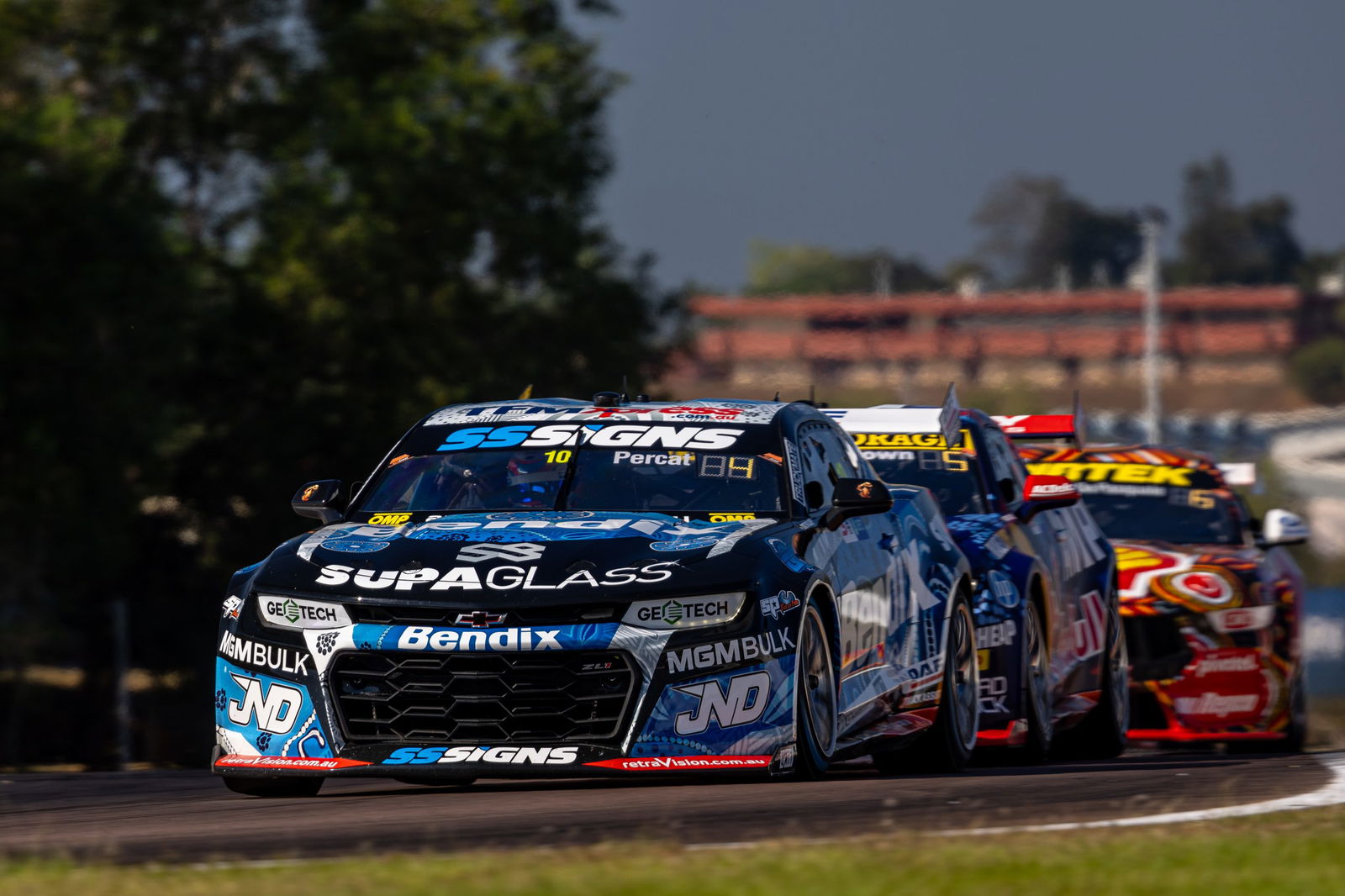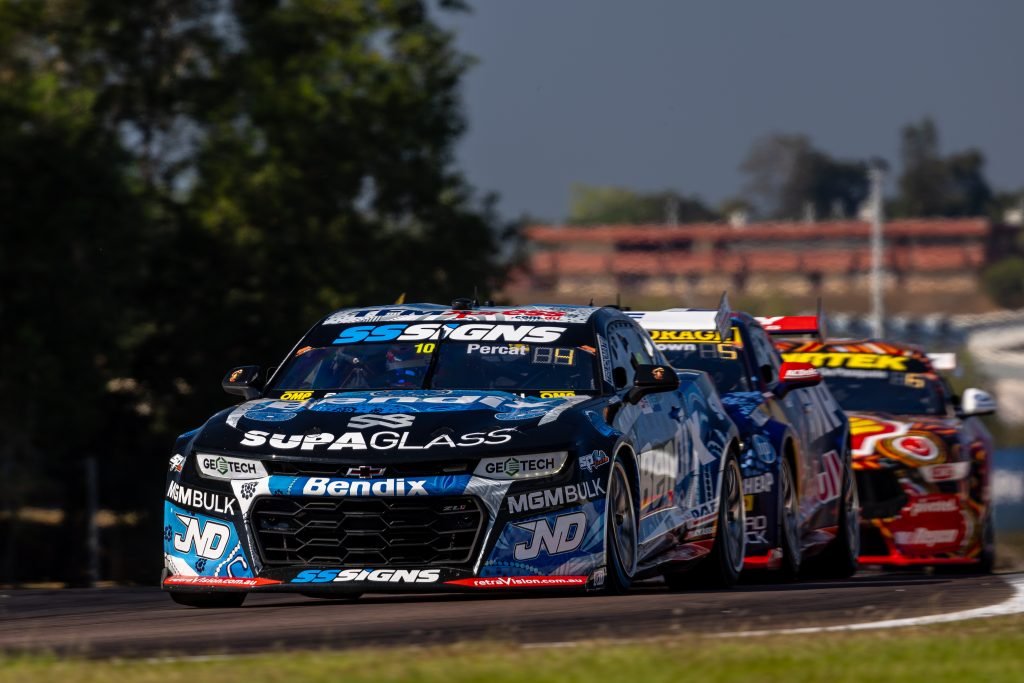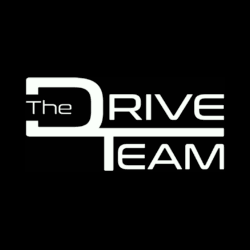

Three Camaros underwent Saturday night engine changes at Hidden Valley after Brodie Kostecki’s Erebus Motorsport entry could not start Race 11 of the season, and metal filings were found in the filter of a Brad Jones Racing entry and one from Matt Stone Racing.
Brad Jones himself, in his eponymous team’s post-Darwin tech video, would reveal the issue to be the crankshaft thrust bearing, which KRE Race Engines’ Kenny McNamara has now confirmed.
As it turns out, a new specification of thrust bearing was installed during the last phase of rebuilds, but the engines in question mostly went unused until recently.
One was running just yesterday in the MSR Camaro which Nick Percat is driving on Supercars’ behalf for tyre testing purposes, after which the fix will be complete.
“We freshened 15 of them and they’ve all just been sitting in trucks, ready to use,” McNamara told Speedcafe.
“Five have been used and three have sort of had an issue, so we need to get them out and then swap them out.
“I think there’s one more running [yesterday], and we can’t do that until it comes back from the test.
“We’ll do that [today], and then they’re all done.”
The change had been made because the original spec of bearing was being worn out by heavy clutch usage, although not badly enough to cause the issue which arose at Hidden Valley for Kostecki.
The manufacturer supplies the same bearing to NASCAR but that category employs rolling starts rather than standing starts and hence it escapes Supercars-level torture in North America.
Furthermore, the durability testing which originally took place in the United States cannot simulate clutch usage and the thrusting motion on the start line.
“We went with a different design that was same as the NASCAR guys use and that’s quite a quite a good bearing but obviously not up to the task of getting hammered by the clutch,” explained McNamara.
“And, we’re sitting on the line locker, which is even worse,” he added.
“The old motors used to do it too – it’s nothing new – it’s just, these ones do it tougher.
“I think being an aluminium block, our thrust bearings are in the middle of the block where the early ones used to be at the rear… there’s all those little details that [mean] it’s not strong enough.
“As we saw last year at Bathurst when BJR got bogged in the sand, they kept riding the clutch and you run out of thrust bearing.
“So, we thought that we’ll try and make some better. We tested it in one engine, that’s done 4000km, but we’ll pull that one apart [today.
“Then we’ll just go back to the old [bearing] for now and deal with that, and find something that’s better, but it’s just doing it tough.”
Ironically, the engine which Percat was using yesterday has already had three events in the sister MSR Camaro, which is allowed under a 2024 rule change.
“That motor had already been in the other car for three rounds,” noted McNamara.
“So, it hasn’t shown any problems but I said, ‘Don’t do any practice starts [at the test],’” he quipped.
“We’ll get that back and then that’s the last of them – number 15 – and then rest are all done then.”
Engines have nevertheless been a major cost-saving area in the Gen3 ruleset, with the minor service interval even pushed out this year to 5000km.
Percat and a driver from Ford squad Dick Johnson Racing tested yesterday at Queensland Raceway as Supercars looks to move to a more durable tyre in 2025.




















Discussion about this post